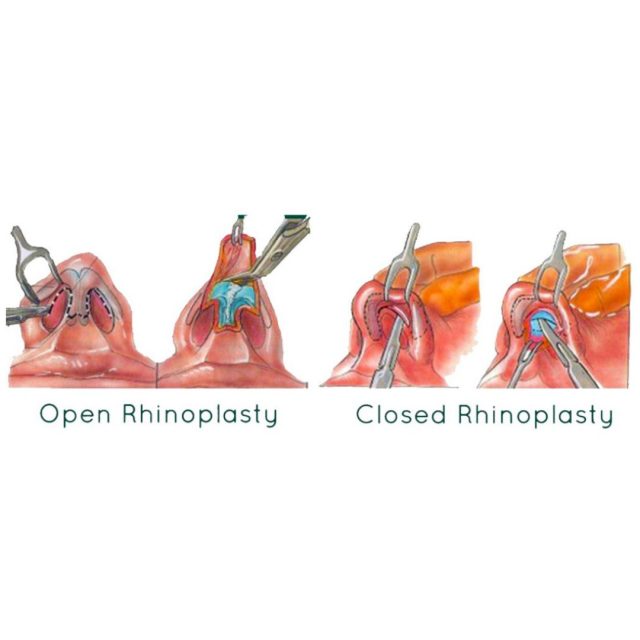Rhinoplasty Surgery
Open Rhinoplasty
In open rhinoplasty, also known as external rhinoplasty, a small incision is made on the columella, the soft tissue that separates the nostrils. This technique allows for easy access to the underlying bone and cartilage structure while under general anesthesia or twilight sedation. The primary advantage of the open technique is improved accuracy in reshaping the nose framework to achieve desired contouring. Because the original structure of the nose has already been disturbed, the open technique is best used when considering revision rhinoplasty. We may also employ the open technique if the patient’s nose is crooked or if a significant reduction in nasal tip projection is desired. The open rhinoplasty method lets in for a clearer view of corrections that want to be made in addition to readability and simplicity for problematic suturing and/or grafting. The scar left in the back of is slightly seen and could typically fade with time.
Closed Rhinoplasty
Closed rhinoplasty, also known as endonasal rhinoplasty, is performed by concealing all necessary incisions within the nostrils. The procedure will be under general anesthesia or twilight sedation through separate surgical openings in the left and right nostrils. The closed technique is less invasive and leaves no visible scarring because there are no external incisions. The absence of the columellar incision results in slightly less swelling during recovery for many of the changes made during rhinoplasty. You can achieve the same results with a closed approach as you can with an open approach.
The Procedure
The procedure is usually performed as a Day Case under general anesthesia. Local anesthetic is also used in the nose to ensure that there is no pain after surgery. The procedure takes about an hour, and you should be able to go home after about 2-3 hours. You will be wearing a small plaster shield to protect your nose and a small piece of gauze taped to your nostrils in case of bleeding. Expect some bruising of your lower eyelids but only minor discomfort. When you get home, it is best to rest upright in a chair or bed.
Recovery
After seven days the nasal plaster is eliminated revealing your new nose! Although it is still a bit swollen, the changes may be obvious! You can assume the swelling gradually to subside over the following couple of months. Many of our patients tape their nostril at night time to reduce the swelling that occurs when you lie down.


